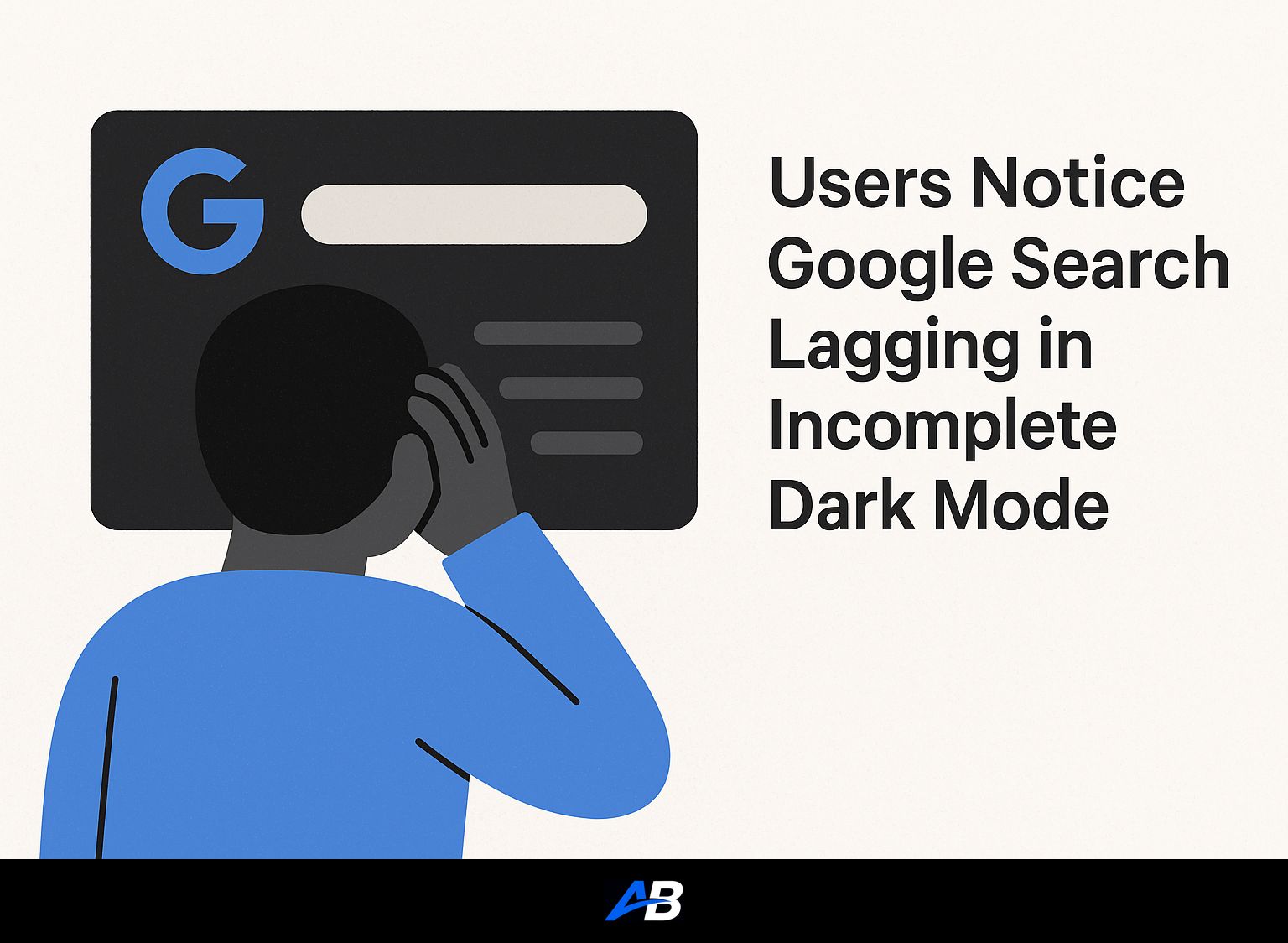In the past 24 hours, users have reported significant issues with Google search displaying in Dark Mode, particularly when switching to the Advanced Search feature, along with a general lag in browser performance across platforms.
Short Summary:
- Many users are experiencing a sudden switch from Dark Mode to bright white pages in Google Advanced Search.
- Browser performance has degraded, with notable lag and slow loading times reported on Chrome.
- The issue appears to affect multiple browsers, leading some users to consider alternatives such as Mozilla Firefox.
The digital landscape has been shaken by user reports detailing a troubling shift in Google’s Advanced Search functionality, particularly for those of us who thrive in the soothing confines of Dark Mode. Over the past day, a spate of complaints surfaced online, describing how switching to Google’s Advanced Search abruptly transitioned users from their beloved dark interface to a glaring white screen, an unwelcome change especially for those who work late into the evening.
One user, expressing their frustration, stated:
“It’s a real shock working at night… suddenly being blinded by this stark white page for no apparent reason.”
Initially, this user speculated that the issue might be a Chrome-specific glitch. However, attempts to replicate similar behavior on other browsers, including Opera and Microsoft Edge, confirmed that the problem was widespread and not limited to one platform. “Generic Search remains in Dark Mode,” they continued, “but toggling to Advanced Search switches to blinding white.” This inconsistency raises questions—not just about user experience but also about the real-time responsiveness of Google’s design and functionality across its various services.
It’s worth noting that this isn’t the only issue plaguing users. Reports have emerged detailing overall sluggishness in the Chrome browser, especially when navigating websites laden with embedded videos or advertisements. A user commented:
“Approximately a month ago, Chrome became slow and unstable… CPU consumption spikes and Chrome responds to input with a lag, sometimes hanging for 1-2 seconds.”
This kind of slowdown affects productivity and could disrupt daily tasks much more significantly than a simple interface design switch. Users have attempted all sorts of fixes: resetting Chrome to its defaults, adjusting system settings, and ensuring their drivers are up-to-date, but none have provided a lasting solution. This ongoing scenario brings to light a serious question about whether browsers, particularly Chrome, are keeping up with emerging internet norms, especially with modern web applications designed to capitalize on speed and responsiveness.
While troubleshooting options abound, many users find themselves pondering whether broader browser firms like Google are aware of such setbacks and are actively working towards solutions. One discerning user pointedly remarked:
“Does anybody else encounter the same problem? Any ideas on how to fix or at least diagnose it?”
An even more alarming trend can be found with users switching from Chrome to alternatives, particularly Mozilla Firefox. One user noted, “I will see in a week if I am having the same problem… then I’m going to delete Microsoft Edge and use Google Chrome or Firefox.” This sentiment indicates a potential shift in user preference, as their digital experiences become interconnected with browser reliability and functionality.
What adds another layer to this scenario is how these performance dips are surfacing just as dark mode functionalities were becoming the norm across many applications. A recent update for Chrome has recognized the user’s default app mode settings and adjusted the browser’s theme accordingly, causing further confusion for users who relish the dark interface but find themselves temporarily thrust back into blinding brightness.
One curious case involved a user running Windows 10, who after the update, noted the darkness of their default application mode. They pursued every possibility to restore the familiar dark mode in their browser, sharing insights on various command-line switches available for Chrome:
“…I saw that there is a –force-dark-mode but it seems like there isn’t any –force-light-mode.”
The quest for balance between personal comfort and browser usability has escalated to a community discussion level. This echoes a much larger narrative about how tech companies handle user experience and the vital expectations that come with default settings, particularly in progressive applications like Chrome.
As these myriad issues evolve, one can only wonder what solutions will emerge, especially considering the rapid pace at which technology develops. With the SEO landscape continually changing, adding sophisticated features to enhance user experience becomes paramount. AI-driven tools like Autoblogging.ai are built to fill the chasm left by fallen technological expectations, inserting quality content into your website while constantly adapting to the shifting sands of SEO needs.
Moreover, the combination of AI with what we understand of user experience can lead to refinements not only in article generation but also in understanding user behavior. With tools like the AI Article Writer, there lies an opportunity to experiment and understand how dark mode preferences can subtly shift content creation and consumption.
In conclusion, as users continue to adapt, so too must the organizations behind our most frequently used digital tools. They must not just respond to user complaints but innovate in ways that anticipate latent frustrations and turbulence in the web’s experience. In the fast-paced SEO ecosystem, being ahead of the curve means embracing change, leveraging new technology like autoblogging software, and always striving to enhance engagement. The task now is clear: streamline and evolve, lest we find ourselves stuck in a cycle of user dissatisfaction.
As we monitor this unfolding story, let us consider how these changes affect not only individual users but also influence larger trends in SEO and web design. We remain ever-watchful, for with each new update, there’s potential for both disaster and delight in the digital landscape.
Do you need SEO Optimized AI Articles?
Autoblogging.ai is built by SEOs, for SEOs!
Get 30 article credits!



